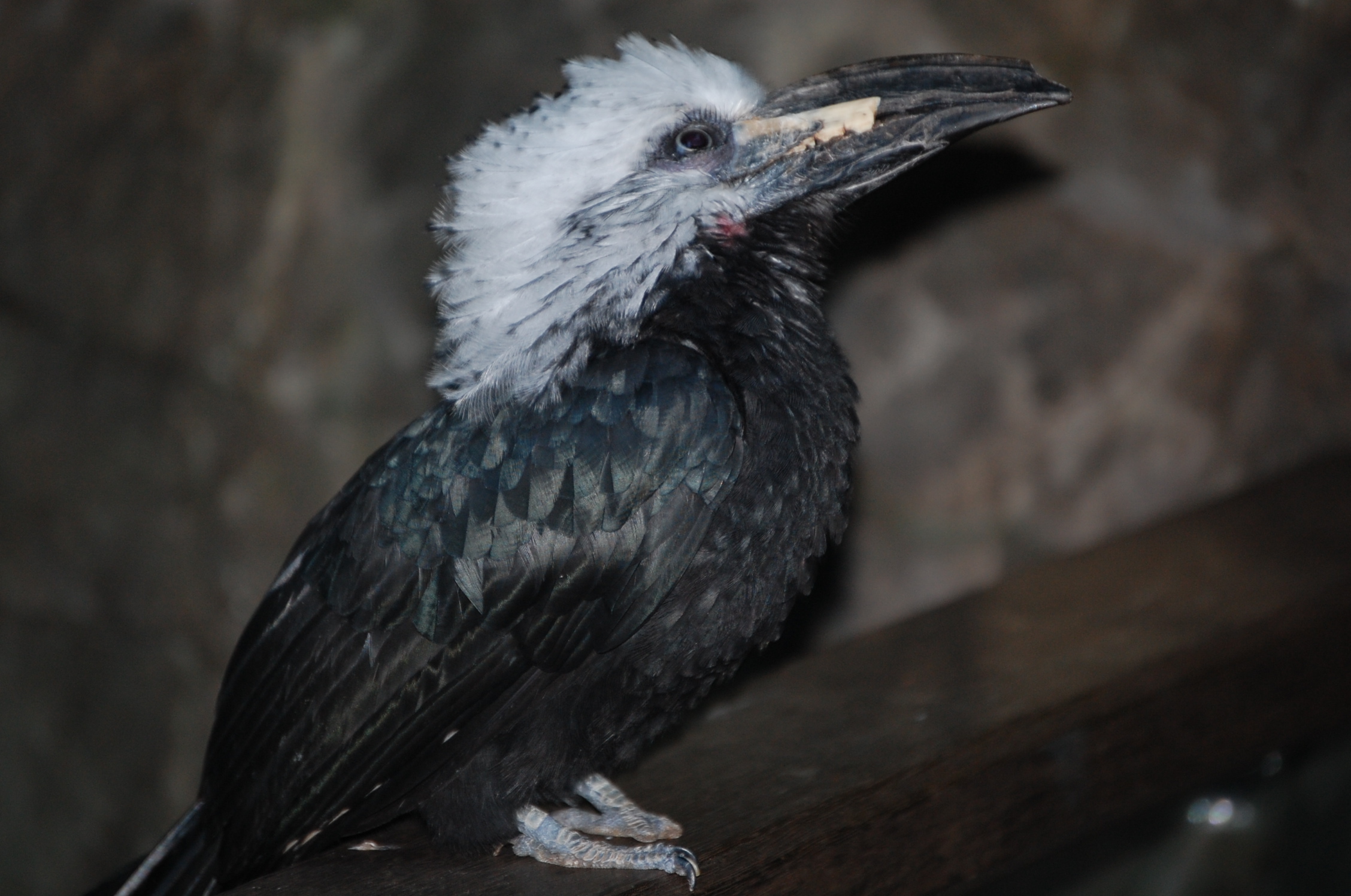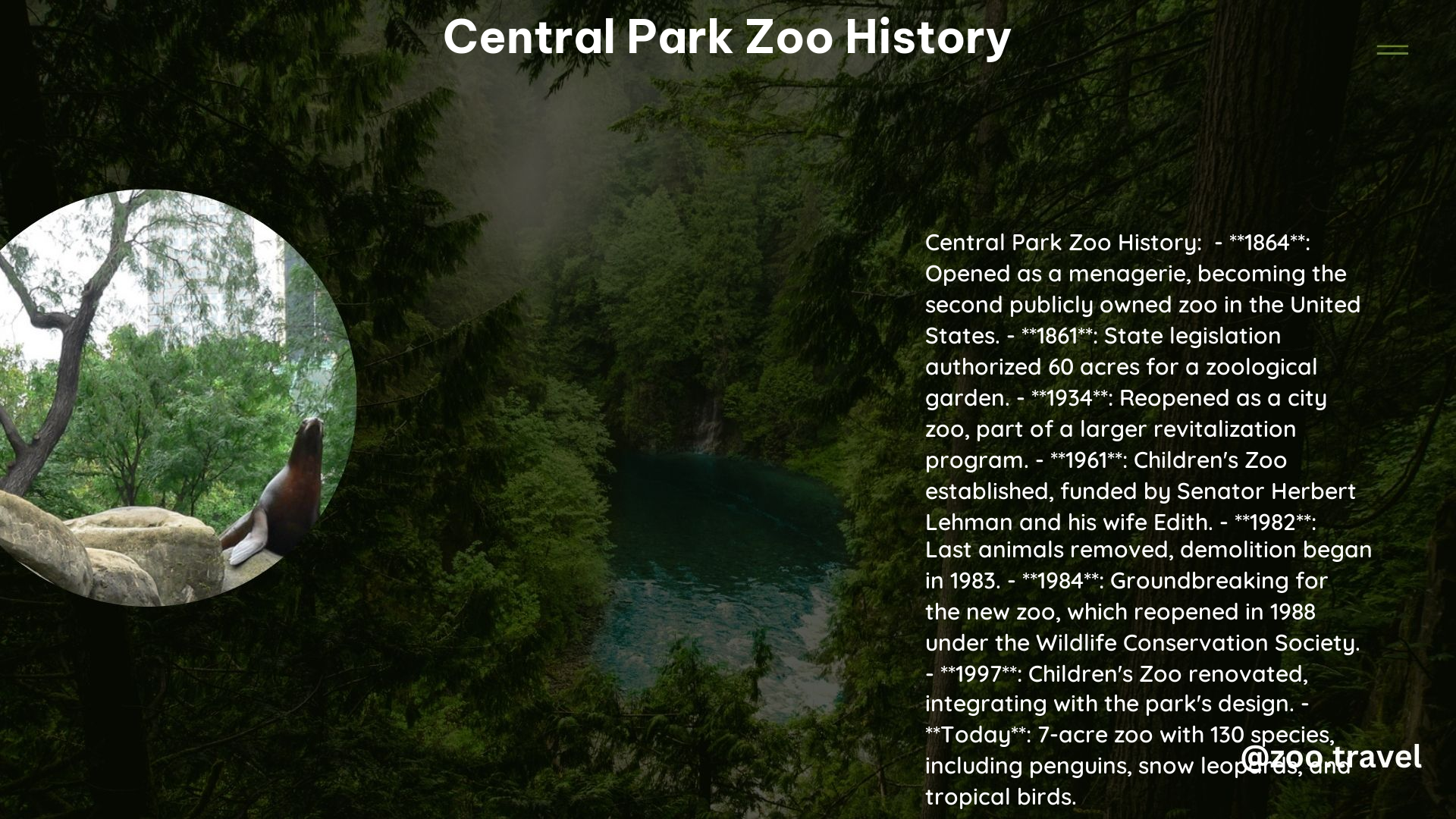The Central Park Zoo in New York City has a rich and fascinating history that dates back to the mid-19th century. From its humble beginnings as a spontaneous collection of exotic pets to its current status as a world-renowned conservation and education center, the zoo’s story is one of evolution, innovation, and a deep commitment to the natural world.
Original Plan and Establishment

The Central Park Zoo was not part of the original Greensward Plan for Central Park, designed by Frederick Law Olmsted and Calvert Vaux. However, a menagerie near the Arsenal, on the edge of Central Park, gradually emerged from the gifts of exotic pets and other animals informally given to the park. The first animal, a bear cub, was left in Central Park in 1859, followed by a monkey the next year. These animals were popular with the park’s visitors, even though there was no formal zoo at the time. By 1862, 60 acres were set aside for the construction of a future “zoological and botanical garden,” later the Central Park Zoo.
Early Years and Development

In 1864, the Central Park Zoo received charter confirmation from New York’s assembly, making it the United States’ second publicly owned zoo, after the Philadelphia Zoo. By then, the park had over 400 animals, including the famous “Murphy” the hippo and “Mike Crowley,” the first chimpanzee ever shown in the United States. The zoo grew rapidly, with over 250 animals donated in 1864–1865 alone. The zoo was initially located behind the Arsenal, with larger animals grazing in the North Meadow during summers.
Renovations and Changes
The present-day Central Park Zoo first opened as a city zoo on December 2, 1934, as part of a larger revitalization program of city parks, playgrounds, and zoos initiated by New York City Department of Parks and Recreation (NYC Parks) commissioner Robert Moses. In the spring of 1980, the Wildlife Conservation Society entered into an agreement with the City of New York to renovate and operate the zoo on behalf of the Parks Department. The new zoo, which was built by 1985, is divided into sections that provide the animals with homes as close to their natural habitat as possible.
The Children’s Zoo, established at Central Park in 1961, was another significant addition to the zoo’s history. Funded in large part by Senator Herbert H. Lehman and his wife Edith Lehman, the Children’s Zoo featured a variety of animals, including llamas, pigs, penguins, cows, a monkey, and white mice, as well as a petting area and other interactive features. The Children’s Zoo was renovated in the 1990s, reopening in 1997 with a different layout and objective.
Current Status
Today, the Central Park Zoo is managed by the Wildlife Conservation Society (WCS) under a contract with the City of New York. The zoo features three major biomes: the Tropic Zone, Temperate Territory, and the Polar Circle, and is home to over 130 species, including giant Grizzly Bears, Snow Leopards, and Tropical Birds. The zoo is actively involved in the preservation of endangered species and offers children’s educational programs, volunteer programs, and community outreach.
Visitors to the Central Park Zoo can enjoy the zoo’s exhibits and events every day of the year, with specific timings for various events and feedings. Tickets must be purchased in advance, and the zoo offers membership options to support its conservation efforts and inspire the next generation of zoologists and conservationists.
References:
– Central Park Zoo History
– Central Park Zoo on Wikipedia
– Central Park Zoo Official Website
